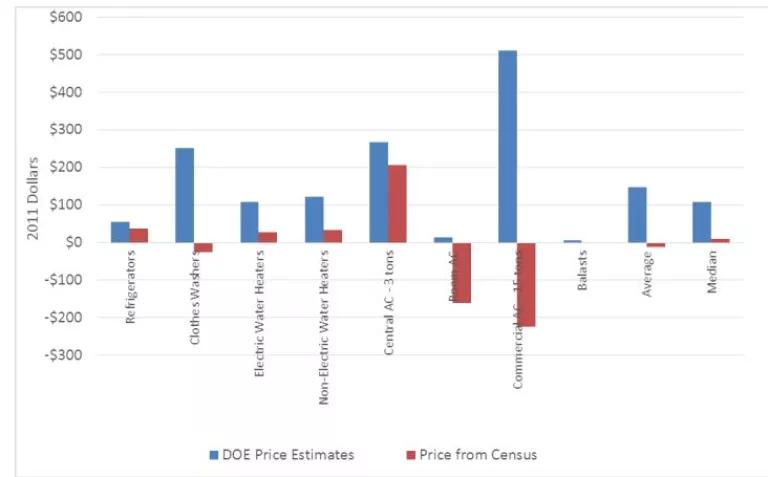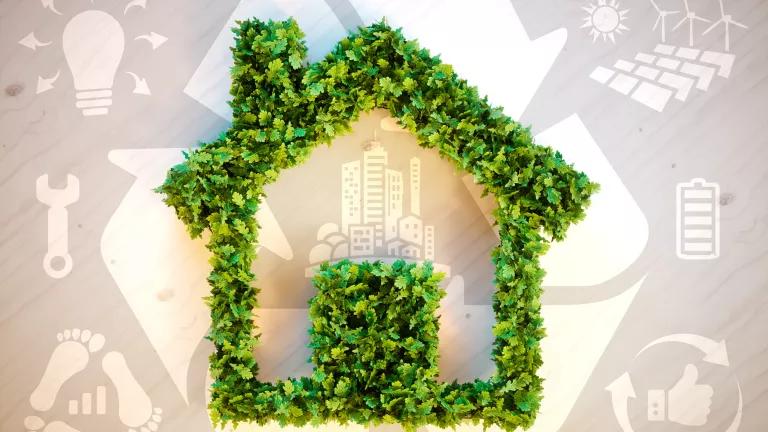
Part 1 of a series. Read part 2 here.
Two trillion dollars: that’s the energy cost savings that will be generated for residents and businesses from the appliance and equipment standards program through 2030. Appliance and equipment standards are responsible for the second-largest energy savings of any initiative, after only the vehicle fuel economy standards program. But how do those huge savings accrue to low-income customers? That question was posed to my colleague Elizabeth Noll during her recent testimony in front of the House Energy and Commerce committee.
Elected officials have good reason to be concerned about the impact of energy bills on low-income households. A recent study by the American Council for an Energy Efficient Economy and the Energy Efficiency for All project (a coalition of groups that includes NRDC, consumer advocates, and affordable housing partners, among others) found that low-income households, households of color, and renters experience higher energy burdens than the average household in the same metropolitan area. This difference in energy burden – meaning the percentage of gross household income spent on energy bills – is striking: on average, low-income households spend 7.2 percent of their income on utility bills, more than triple what is spent by higher-income households.
These numbers are alarming, but the good news is that there are opportunities to reduce the energy burden on low-income households while creating substantial environmental benefits, through energy efficiency. While the study focuses mainly on the efficiency benefits created by the federal Weatherization Assistance Program and programs administered by utilities, standards are also an important driver of savings for low-income customers.
How do efficiency standards benefit low-income families?
Low-income households often live in older, leakier housing with inefficient appliances and equipment. Standards ensure that when old equipment is replaced, the new equipment meets a minimum level of efficiency, which in turn saves energy and money on electricity and gas bills. Energy efficiency programs work hand-in-hand with standards by providing financial assistance for low-income consumers to maximize energy savings.
Efficiency standards are particularly important for renters and families living in multifamily housing – groups which are statistically more likely to be low-income. Renters don’t often have control over the types of appliances and equipment found in their homes, and landlords (who don’t generally pay the utility bills) don’t have much incentive to invest in anything but the cheapest equipment they can purchase. While NRDC is working to help make it easier for affordable multifamily properties to become more energy-efficient, standards ensure that even the least-expensive equipment available meets a baseline level of efficiency. Minimum efficiency standards protect all consumers, particularly those who don’t make the purchasing decisions.
What if I don’t buy a new appliance?
Energy efficiency standards benefit anyone who pays a utility bill or wants to breathe clean air, whether or not they buy a new appliance. Strong standards reduce energy consumption over time, which means that the dirtiest power plants do not need to run as often -- and therefore emit less harmful pollution. As low-income households and households of color are often located in closer proximity to dirty power generation, the savings from efficiency standards means that these populations benefit from cleaner air and fewer health issues exacerbated by pollution, like asthma.
Over time, savings from standards means utilities do not have to build as many new power plants. Since their construction costs are passed along to customers in the form of higher rates, this means energy rates and energy bills are kept lower than they would be otherwise. All consumers benefit from lower rates, but especially low-income households since a larger proportion of their income goes toward paying these bills.
As an example, in the Pacific Northwest, electric load growth was reduced from 1.1 percent per year to 0.8 percent per year, due entirely to federal efficiency standards finalized between 2010 and 2014. This equates to a savings of 13,000 gigawatt-hours per year by 2035 – about one and a half times the annual electricity use of the city of Seattle. This electricity will never have to be generated, and consumers will never have to pay for that energy – because it’s not being used, thanks to efficiency standards!

But doesn’t new equipment that meets higher standards cost more for consumers?
A common critique of more stringent energy efficiency standards is that they increase the purchase price of the product, which has a particularly negative effect on low-income consumers. This is a factor the U.S. Department of Energy (DOE) considers very seriously as they determine the level at which a standard should be set – or whether a standard is warranted at all. DOE analyzes the impact of standards specifically on low-income consumers, seniors, and residents of multifamily housing. If DOE finds that the impact on any of these groups is too high, DOE is not required to issue the standard or may choose a different standard level. DOE sets standards at levels found to be cost-effective for consumers.
The Appliance Standards Awareness Project (ASAP) and the American Council for an Energy Efficient Economy (ACEEE) conducted an independent study to investigate the change in product cost due to equipment standards. The study found that DOE routinely overestimates the change in price for appliances and equipment that meet updated standards – and often by a very significant amount. When looking at nine recent rulemakings, DOE projected an average increase in the manufacturer’s selling price of $148. In reality, the average actual change in selling price was a $12 decrease! Even for the products that experienced an increase in cost, the increase was less than what DOE had projected, as shown in the chart below.

So what does that have to do with low-income consumers?
The claim that low-income families are negatively affected by more stringent efficiency standards because equipment meeting those standards is much more expensive is simply not defensible. DOE takes the unique needs and constraints of low-income customers into account in their analysis, and DOE’s overestimation of costs also means that they subsequently underestimate the net benefits to consumers. With a smaller increase – or even a decrease – in the upfront purchase price, an investment in a new, more efficient piece of equipment pays for itself in energy savings sooner than DOE projects, if not immediately. I dig into this a bit more in part 2 of this series, but real data – not simply projections from economists – shows that prices for common equipment have decreased over time even as products have gotten more efficient.
Yes, there is still the question of the affordability of any piece of new equipment for low-income customers. It’s undeniable that replacing something like a furnace, air conditioner, hot water heater, or refrigerator is a large expense, and one that many low-income customers may not be able to easily absorb. But that’s a much different issue than the small -- often-negligible -- incremental first cost imposed by an updated efficiency standard. Utility efficiency programs and consumer assistance programs throughout the country are working to help overcome the much larger problem of energy and equipment affordability. Standards help to decrease operating costs and make energy bills more affordable for consumers as they use the products – not more expensive.
In fact, consumer groups including Consumers Union, the Consumer Federation of America, and the National Consumer Law Center are all strident supporters of energy efficiency standards, because their benefits are proven and real. Don’t just take my word for it: Shannon Baker-Branstetter, policy counsel for energy and environment at Consumers Union says, “Consumers Union views efficiency standards for appliances as a win-win for saving consumers money and reducing energy consumption and its environmental impacts. Raising the bar for efficiency of household products, with policies such as Energy Star and appliance efficiency standards, is one of the easiest and most effective ways to help consumers save money."
Efficiency standards are an example of government regulation that works the way it was intended. Cutting energy waste benefits all consumers with cleaner air, a more reliable electric grid, and lower bills. That’s policy we can all feel good about.


